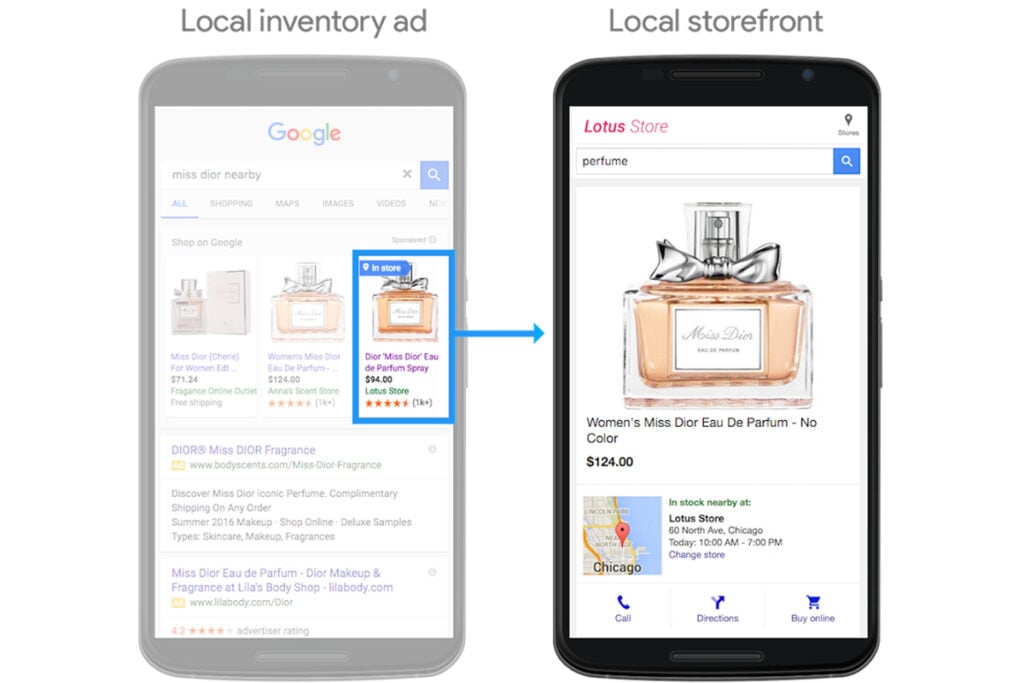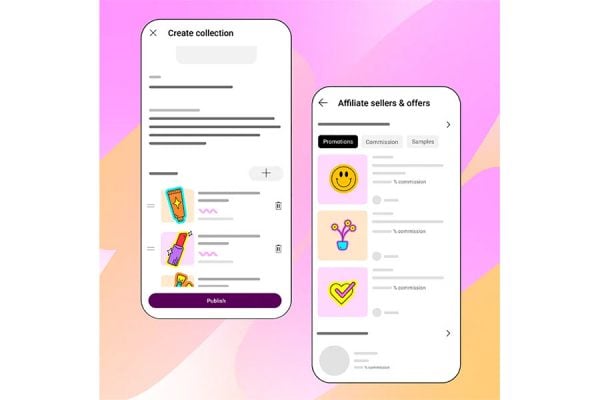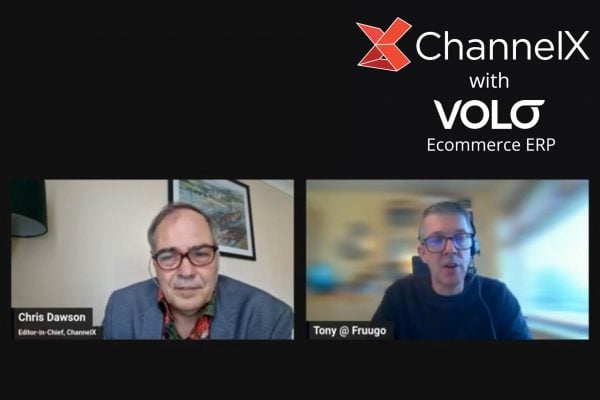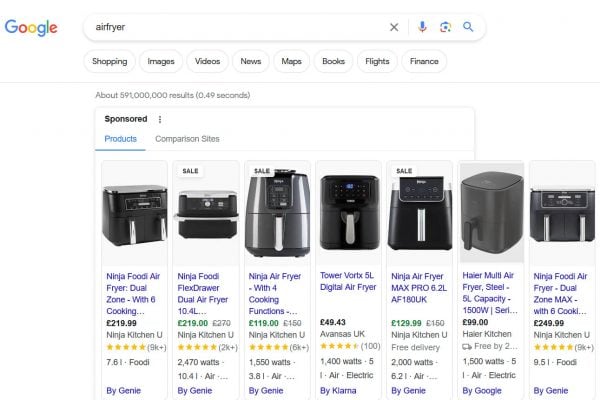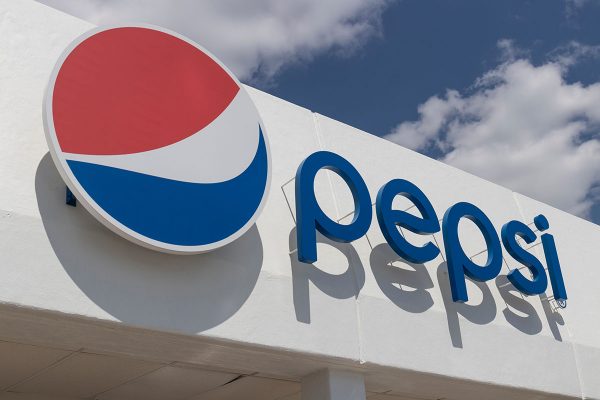Lengow are experts in product feeds and can help you get your products listed on over 1800 ecommerce channels worldwide. Today they introduce Google Local Inventory ads and explain how they can drive online traffic into your off line store:
How Google “Local Inventory Ads” are redefining the consumer experience
Nowadays, online and offline consumer journeys are considered to be worlds apart. Brick-and-mortar retail appears to have taken a back bench when it comes to progression, with retailers who previously relied on in-store sales having to go digital in order to keep up with the surging trends in the ecommerce industry. However, in-store sales remain the main source of revenue for many retailers.
In order to live up to all-the-more demanding consumer expectations, online retailers need to follow suit and establish a brick-and-mortar presence. We can look to Amazon as an example. The online retail giant recently revolutionised the shopping experience with the creation of their first cash free convenience store.
In order to continue evolving in the retail industry, the online and offline worlds need to join forces and establish a link that benefits consumers, providing them with the best shopping experiences possible. With this in mind, in 2013 Google launched their Local Inventory Ads (LIA) in the US and extended LIA to the UK in 2014. LIA is system that showcases products and store information to nearby shoppers searching with Google.
From Online to In-Store
In the UK alone, 39% of e-commerce transactions involve multiple devices in the path to purchase. Google takes advantage of this growing consumer trend through the multi-channel nature of LIA, recognising that consumers are increasingly using several devices in their buying journey. The integration of LIA into the Google Shopping platform allows retailers to to promote both online and in-store stock and increase their customer touch points. There are no longer any boundaries between online and in-store purchases, in fact, 82% of smartphone users say that they consult their phones on purchases they’re about to make in-store.
So how does Google’s ‘in-store’ ads work? When a consumer is searching for an item, with LIA, a selection of products that correspond with their search will come up. Rather than just showing what is available online, consumers are directed to products that are available in stores in their vicinity. In one simple click, the user is taken to a Google-hosted ‘Local Storefront’ page which accesses the product sheet, checks the product price and availability, tracks the store location, maps the route and finally finds the opening hours and customer reviews.
River Island was the first UK fashion brand to use Local Inventory Ads and they saw their return-on-spend rise by 15%, while a 33% increase in sales was observed when offline performance data was included.

The incorporation of LIA into Google Shopping Ads brings a whole new dimension to the customer buying experience, creating a bridge between the growing demand for ‘local’ searches and mobile commerce. For retailers who rely on both online and in-store sales, LIA is an attractive feature charged on a CPC basis. Note that as a retailer, you can also use LIA even if you do not have an online store.
Tackling the challenges of e-commerce
There is a growing demand for immediate purchases with prompt delivery, which proves to be a challenge for online retailers. With this new advertising format, Google is responding to the demands for flexibility and immediacy that retailers need to implement in their stores, both online and off. A study by Google and Ipsos in 2014 revealed that consumers can be influenced to make an in-store purchase if they know that a store is nearby and that they can get the product quickly.
LIA takes away the barrier of high delivery costs (74% of consumers abandon their baskets due to the cost of delivery), offering an alternative way for consumers to receive their products. Additionally, by diverting consumers to their physical stores, retailers can make up for financial losses incurred by having out of stock items online. Overall, this is a great opportunity to boost shop traffic, get additional sales, and avoid missing out on orders.
An added bonus to using LIA is being able to offer consumers the option for last minute orders. Although the online retail market continues to evolve, unlike Amazon, the majority of market players are not equipped to manage last minute orders and guarantee same day delivery. The management of last minute orders is often considered essential in order to stand out in today’s market, however it requires significant investment and additional costs that not all market players can afford to set up.
With the emergence of new consumer behaviour patterns, market players are obliged to constantly reevaluate and evolve their services in order to reach a wider audience. This can be through Google, but equally through Facebook as the social network now plays an interesting role in the ecommerce industry. In 2016 Facebook launched Dynamic Ads for Retail (in the United States), an advertising format similar to that of Google LIA. This reinforces the idea that the key to a successful multi-channel strategy lies in multiplying the number of marketing channels in order to give visibility to your entire product catalogue.
